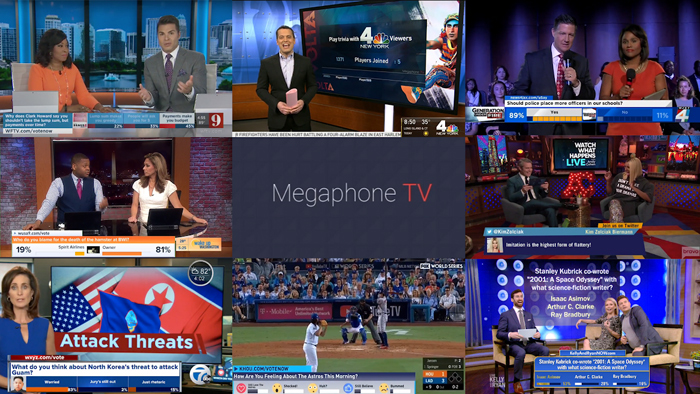MUMBAI: With streaming video services like Netflix, Amazon, Disney+Hotstar, and Zee5 grabbing a majority of the headlines, and becoming the flavor of the moment, many believe that linear television in India is losing its moxie. Yes, broadcasting companies are indeed responding aggressively to Netflix and Amazon’s invasions into what was once solely their territory by acquiring, merging, and launching their own OTT platforms. Not just in the US, but almost every nation, including India.
Yes, it’s true that India alone has around 70-80 streaming platforms – if you include those with dubious titillating content, and which are available on the google play store. Yes, it's true that almost every trade and business publication has raised the alarm that streaming video platforms are going to steal viewers and pull the rug from under television’s feet.
But the fact is that the reality is as far from this fear-mongering, as is mount Everest from Mumbai. Television is only on the rise in India. That is quite evident from the television data the Broadcast Audience Research Council (BARC) reported recently. The number of Indian television households grew to 210 million by the end of 2020. Some 13 million homes were added to the TV universe since the last BARC study in 2018; of this rural India accounted for nine million. TV viewership also rose to 892 million individuals from 836 million. Add to that the fact that more than 90 million households have yet to own a TV set.
Now if you compare those figures with the OTT universe: the biggest OTT platforms in India - Disney+Hotstar and Zee5 - have monthly active users which are around one-third of TV’s viewing population and other streamers have significantly lower numbers. Subscribers to the premium OTT services are also only in the single and double-digit million range. Revenues too are not comparable; the free ad-supported television streaming platforms are dwarfed by the ad revenues that Indian television –both pay and free to air channels are mopping up.
Clearly, broadcast television has long legs and will continue to stride ahead of streaming services. What can help it proliferate even more is if interactivity can be built into it; with viewers being able to interact with it live from their homes. Just like it is possible with the streaming video which is delivered over internet protocol or the internet as is the case with OTT platforms. Sports fans have been fascinated by what has been playing out on their mobile phones wherein they can make comments while watching the IPL action on their smartphones on Disney+ Hotstar. They can engage with the video on their phones. Fans have also been quite taken up with being involved in Kaun Banega Crorepati with the play-along option available on their smartphones. That has probably added to SonyLiv’s stickiness.
But today technology is available which can bring similar – if not better - interactivity to television too. One of the best products available today is MegaphoneTV which allows viewers to interact with their programmes from the comforts of their sofas in their homes. It enables them to take part in opinion polls, trivia, social interaction, quizzes, express their fan love, expound their views on what’s going with the storylines and characters of their favourite TV shows – and their responses and names are transmitted to hundreds of millions of viewers all over India simultaneously immediately with a lag of fewer than 200 milliseconds. All they need is a smartphone. Megaphone TV allows TV to transform itself from being a dead one-way device to one with which viewers can correspond, that too without any latency.

More than 160 channels globally are using Megaphone TV – from US broadcasters ABC, CBS, NBC, Bravo TV, CNN, Sky TV in the UK, and RTL in Germany. And they have benefited immensely from this tool with response rates and engagement with TV viewers going up exponentially.
Channels- both entertainment and news - globally have used MegaphoneTV to build loyalty by giving out rewards to loyal participants of the interactivity, thus increasing stickiness and spiking time spent viewing by TV viewers.
New York-based Megaphone TV founder & CEO Dan Albritton points out that integrating the tool with the channel’s backend is extremely simple, adding that all that is needed are internet connectivity, two computers – one in the playout hub of the broadcaster, and one in the hands of a junior programming executive wherever he is located. He explains: “Being a white-label service, it takes on the channel’s packaging, branding, and look with no indication of Megaphone branding anywhere. The interactivity questions, polls, and quizzes can be entered to appear on-air on a TV channel on the fly by the junior executive after strategizing with the programming team. “
Brands can be roped in by the channels ad sales team to sponsor the interactivity. And TV commercials by brands can also be created which encourage viewer responses live, thus in the process helping build sales funnels and consumer data, to which the broadcaster’s data teams and marketers have free access. “The American TV industry has recognized the value we are offering through Megaphone TV. We have won an Emmy Award for it, and have been nominated twice for some of the interactivity around other TV programmes,” says Albritton.
In India, TV channel executives are just about getting exposed to Megaphone TV, he points out.
“Two channels have been licensed to use this engagement driving tool. They will be coming out with their offerings soon. Some leading media agencies have seen it in action too, and are excited about the possibilities Megaphone TV offers,” he says. “I can visualize a time in the not too distant future when Megaphone TV will become ubiquitous in the very exciting Indian television ecosystem.”






